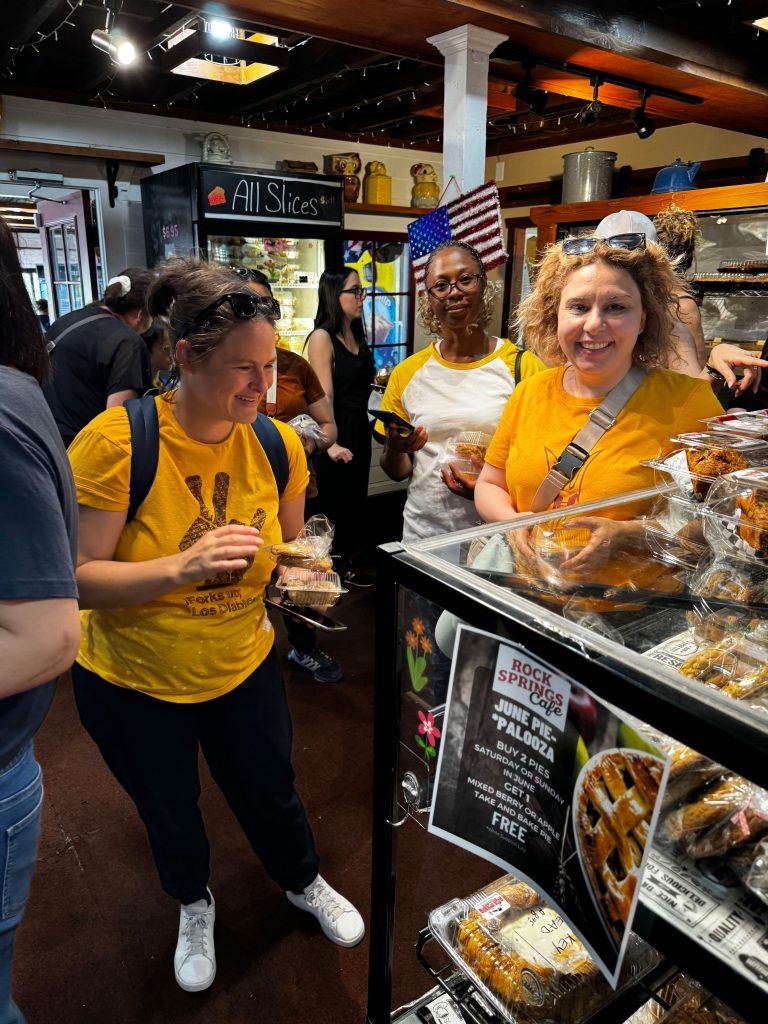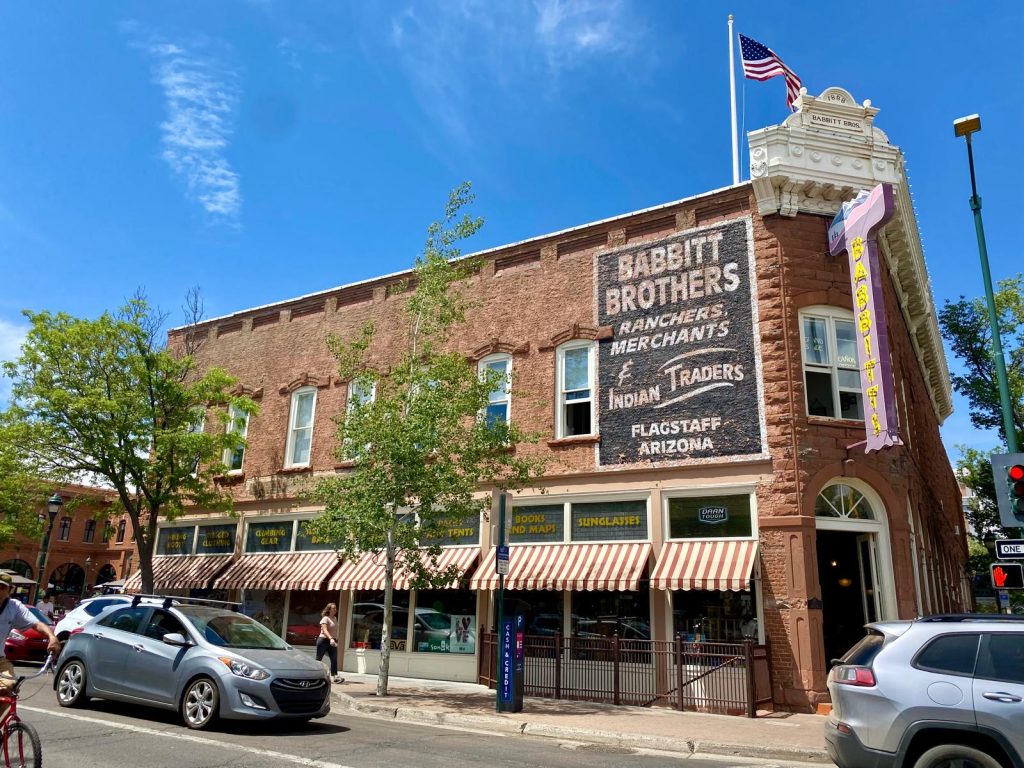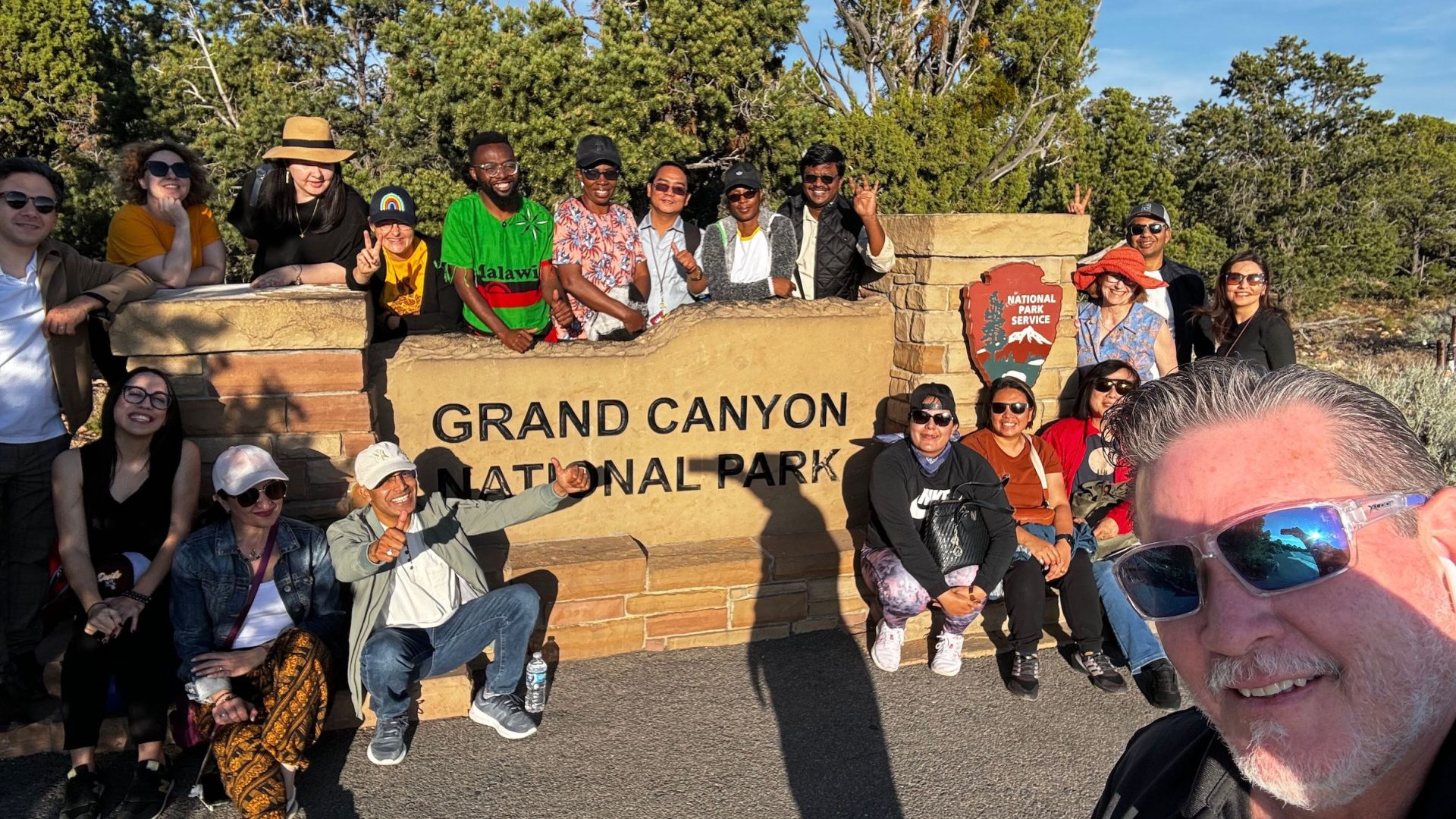Yesterday marked the end of the first week for the Study of the United States Institute (SUSI) 2024 Scholars and it was such a delight for those of us at the Arizona State University’s (ASU) Walter Cronkite School of Journalism and Media to take a road trip! Coming right off the bat of an exciting First Friday the previous evening and our official welcome reception the day before, Saturday June 8th held a lot of promise. I, however, was not fully prepared for the learning experiences that lay in store during our trip to Old Town Flagstaff and the Grand Canyon.
You see, I have been fascinated by the Grand Canyon from my days as a young reader and have long hoped to have the opportunity to visit it. And when the opportunity came via the road trip, I realized that the Grand Canyon is not visited, rather it is experienced. I also soon learnt that each of the places we visited had something that somehow resonated with discussions we have had so far at SUSI 2024. Here are my reflections.
Of Resilience and Identity
Our road trip on Saturday morning took us from our current home in Downtown Phoenix, through the Sonoran Desert to the Grand Canyon, about four hours north. Our first stop on the itinerary was Rock City, about forty-five minutes from Phoenix. There we visited a cactus forest, as well as Rock Springs Café and the adjoining rock shop. We learned some interesting facts about the Cacti in cactus forest, courtesy of Ronnie, who doubled as our driver and knowledgeable guide. The fact that the tall Saguaro cacti are native to the Sonoran Desert[i], reminded me of a discussion on differences in journalism and journalism education. It dawned on me (no pun intended, Professor Dawn Gilpin) that this would make for a pretty good analogy, that resilient journalists are like cacti. Resilience may mean being able “to push boundaries, harness technologies, resist oppression, engage new audiences, to keep telling stories about people, for people,”[ii] especially when conditions are unfavourable. This necessitates curricula and approaches suited to current and future contextual training needs, as well as policies that support and protect resilient journalism.
Additionally, the allure of the sweet smelling and delicious tasting good ol’ American pie at Rock Springs Café, coupled with the uniqueness of the beautifully hand crafted rock-art from the Rock Shop reinforced my belief that identity is key. Just as the delicious freshly-baked are associated with American culture, so too each country can develop its own unique style of journalism that it can proudly call its own.

…Values and Tradition
Our next stop was the picturesque Old Town of Flagstaff, with a rich history and an inviting warmth reminiscent of scenes from some of my favorite Hallmark movies. As we made our way around the town, we thoroughly took in the appeal of the town’s infrastructure, shops and eateries, murals, and statues, and photographed places of interests. I was particularly fascinated by Heritage Square and charmed by how the town leveraged elements of its past it held dear to move it forward. It reminded me of the importance of practically living out core values and aspirations designed to underlie journalism practice and education. And from our experience so far, we can say that the ASU Charter is well lived out. With our eyes and stomachs satisfied, we continued our journey to the Grand Canyon.

…and Staying the Course.
None of the mental images I had of the Grand Canyon from my days as a young reader prepared me for the real thing. Designated by UNESCO in as a World Heritage Site in 1979, the majestic view of the 446 km long, 29 km wide and 1,857-meter deep valley of the Colorado River was indeed a sight to behold[iii]. It was aptly greeted by exclamations of amazement from the SUSIs. As we made our way through Grand Canyon National Park, climbed the Watch Tower and walked along the winding trails, we soaked in the breathtaking view of the gorge from various vantage points. I was able to catch small glimpses of the Colorado River at the bottom of the valley and was struck by its transformative impact on the landscape. I was in awe of the vastness of the mark left by the river’s consistent flow over the ages as it stayed its course and carved its way through rock. Journalism possess such transformative influence within communities and countries, if allowed to say the course.
This will of course look different at different times and in different environments. But the goal remains to “put it [information, news] before them briefly so they will read it, clearly so they will appreciate it, picturesquely so they will remember it and, above all, accurately so they will be guided by its light” [emphasis mine][iv].
As I watched the sun slowly sink behind the glorious peaks and the walls of the Grand Canyon change into warm colours, my hope for fulfilled aspirations was renewed.
[ii] Journalism is extraordinarily resilient in the face of pressure and change
[iii] Grand Canyon National Park
[iv] Put It Before Them Briefly So That They Will Read It, Clearly So That They Will Understand It
